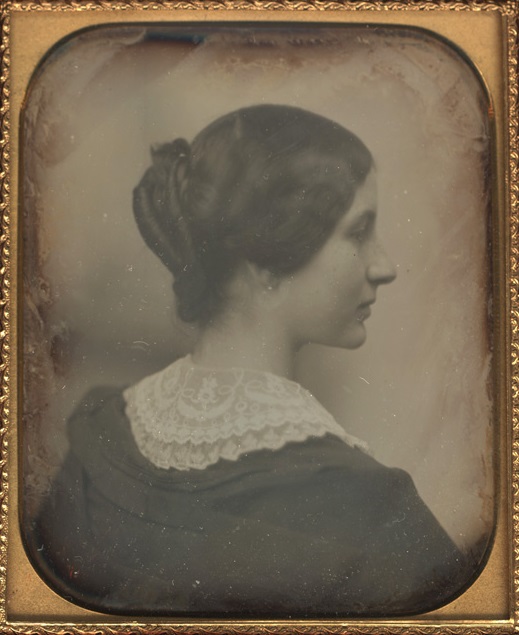By Heather Rockwood, Communications Associate
Annie Adams Fields (1834‒1915) was an author and social reformer who made her home at 148 Charles Street the center of literary Boston. Her circle of friends included authors published by her husband, James T. Fields, of Ticknor & Fields, as well as European writers visiting Boston. The MHS holds Annie Fields correspondence, travel and other diaries, translations, and a scrapbook on Charles Dickens.

Fields made a number of literary friends during her travels in Europe, 1859‒1860, and these writers later came to her salon in Boston along with New England and other US authors. What makes these friendships of particular interest today are Fields’s descriptions of the writers, penned with a keen eye. For example, she hosted a dinner on 21 November 1867, that included Charles Dickens. Afterward, she wrote about Dickens in her diary:
Dickens bubbled over with fun & I could not help fancying that Holmes bored him a little by talking at him. I was sorry for this because Holmes is so simple and lovely but Dickens is sensitive, very. He is fond of Carlyle, seems to love nobody better and gave the most irresistible imitation of him. His queer terms of expression often convulsed us with laughter and yet it is difficult to catch them as when in speaking of the writer of books always putting himself, his real self in ‘which is always the case,’ he said ‘but you must be careful of not taking him for his next door neighbor.’
Many visitors found Fields to be a sympathetic listener and confided in her, such as Nathaniel Hawthorne. After his visit with Fields on 6 December 1863, following a funeral, she wrote this passage about him:
As the sunset deepened Mr Hawthorne talked of his early life. His grandfather bought a township in Maine and at the early age of eleven years he accompanied his mother and sister down there to live upon the land. From that moment the happiest period of his life began and lasted until he was thirteen when he was sent to school in Salem. While in Maine he lived like a bird of the air so perfect was the freedom he enjoyed. During the moonlight nights of winter he would skate until midnight alone upon the icy face of Sebago Lake with all its ineffable beauty stretched before him and the deep shadows of the hills on either hand…. All the long summer days he roamed at will, gun in hand through the woods and there he learned a nearness to Nature and a love for free life which has never left him and made all other existence in a measure insupportable. His suffering began with that Salem school and his knowledge of his relatives who were all distasteful to him. He said, how sad middle life looks to people of erratic temperaments. Everything is beautiful in youth—all things are allowed to it.
Fields also observed Hawthorne on his way to the funeral on 4 December 1863, and wrote, “He says in it ‘pleasure is only pain greatly exaggerated’ which is queer to say the least if not untrue. I think it must be differently stated from this. He was as courteous and as grand as ever—and as true. He does not lose that all saddening smile, either.” This last sentence leads the reader to surmise that Hawthorne always had a “saddening smile.”
The descriptions Fields wrote about her literary friends were used by her husband to create essays on Hawthorne and Dickens, published in The Atlantic Monthly in 1871 and in his book Yesterdays with Authors in 1872.
You can read Fields’s transcribed diaries in the online edition of The Brownings’ Correspondence.

